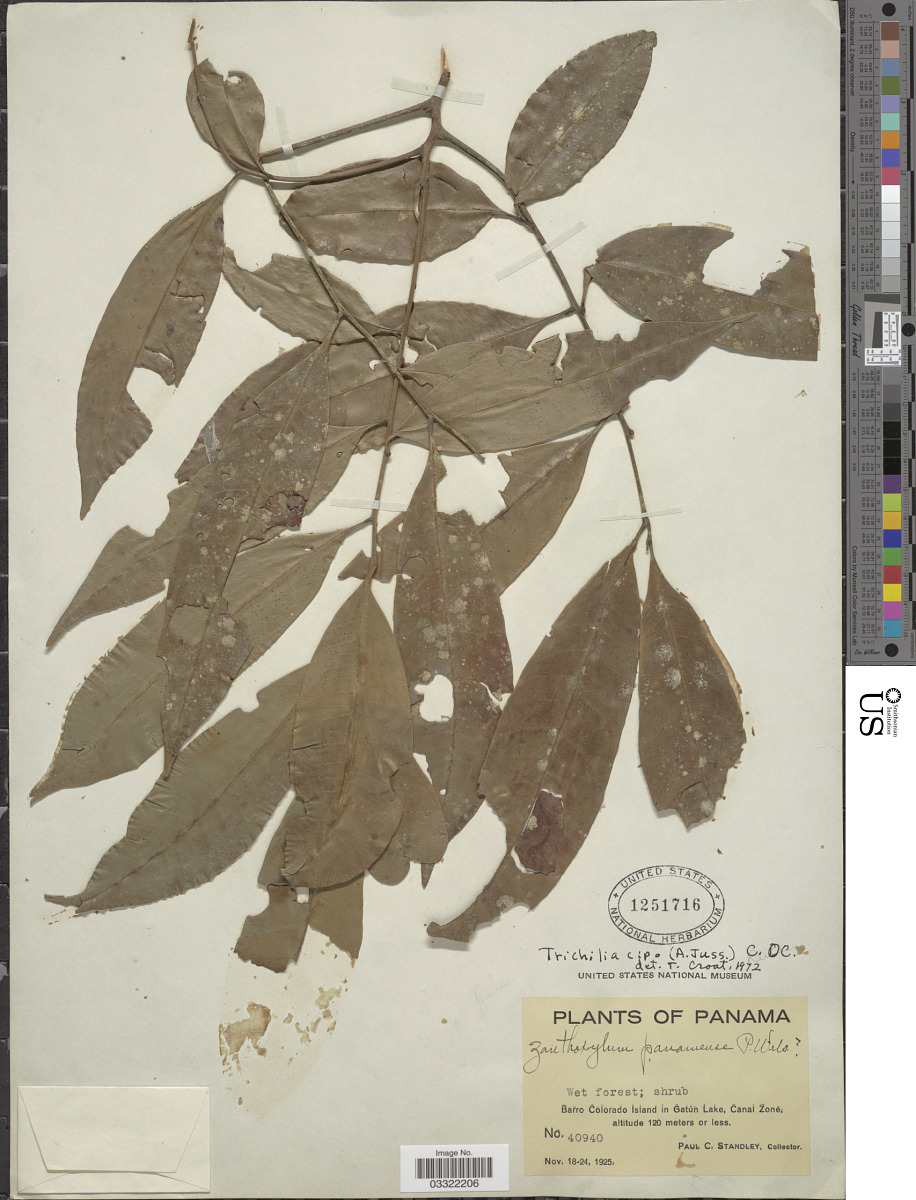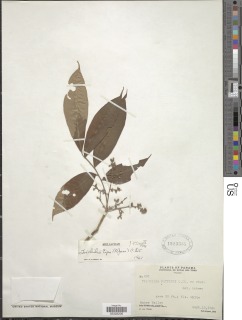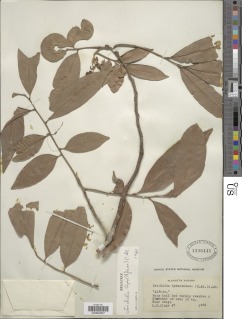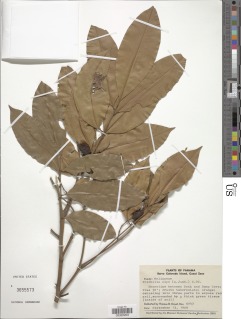

|
|
|
|
Family: Meliaceae
|
Trichilia tuberculata C. DC. Alfaje, Alfajeo Colorado, Camfine, Fosforito Tree, to 30 m tall and 40 cm dbh (often much shorter along the shore); outer bark hard, closely fissured; inner bark red; younger stems, leaf rachises, and axes of inflorescences densely strigose and puberulent (in Panama) or sparsely strigose, sparsely puberulent, or nearly glabrous (often in South America). Leaves alternate, imparipinnate, mostly 15-30 cm long; petioles flat on upper surface with marginal ribs; leaflets apparently never dimorphic, usually 5-9 (rarely 3 or 10), usually alternate, +/- elliptic, acuminate, obtuse-attenuate at base, 4-21 cm long, 1.5-8 cm wide, usually glabrous or minutely puberulent and/or strigose on midrib on both surfaces, rarely strigose below; midrib sharply raised. Panicles axillary (often appearing terminal), mostly 8-20 cm long; flowers white or greenish-yellow, 4-6-parted, as wide as long, globular in bud, the trichomes (at least on calyx) erect or appressed; calyx saucer-shaped, the lobes acute or blunt; petals valvate, ovate, to ca 2 mm long, glabrous or sparsely appressed-pubescent outside, glabrous inside, the margins papillase-puberulent; staminal tube two-thirds to three-fourths as long as petals, broader than long, glabrous outside and in but sometimes pubescent inside near apex, the lobes narrowly acute; anthers twice as many as petals, very narrowly ovoid, ca 0.5 mm long, alternating with and usually longer than lobes of staminal tube; ovary broadly ovoid, densely appressed-pubescent with white trichomes all over; style usually glabrous. Capsules ellipsoid, 11-18 mm long, orange at maturity, prominently tuberculate, the 3 (4) valves folding back to expose shiny red aril; seeds 1 or 2, smooth, ellipsoid, ca 1 cm long. Croat 12271, 12500. Abundant as seedlings; common as adults in the forest, especially in the old forest. Flowering is bimodal, but principally from April to June, especially in June; a second but much smaller flowering period may occur from September to November. It is not known whether the second flowering occurs each year or only sporadically. The fruits from the first flowering mature mostly during September and October, especially in October; mature fruits from the second flowering have been seen in June. |




